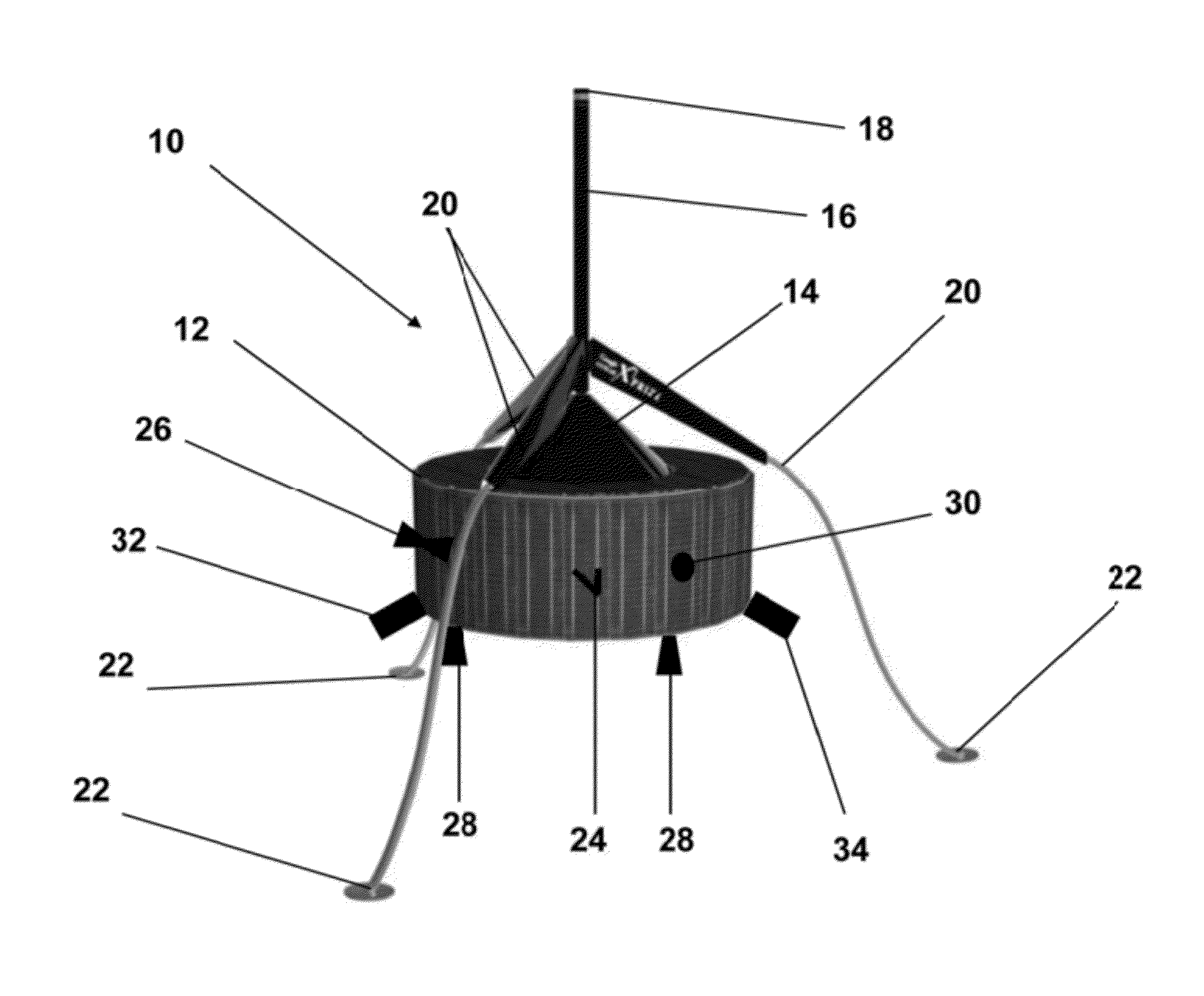Spin-stabilized lander
a spin-stabilized, lander technology, applied in the field of soft landing systems, can solve the problems of high system cost, simple additional liquid propellant needed, and the cost of roaming in this approach
- Summary
- Abstract
- Description
- Claims
- Application Information
AI Technical Summary
Benefits of technology
Problems solved by technology
Method used
Image
Examples
Embodiment Construction
[0017]The present invention provides a novel, spin-stabilized vehicle for landing on, and moving about, a solar system body. Compared to conventional lander design approaches demonstrated during the past 45 years or so, the mass savings, overall packaging efficiency and multi-functional capabilities brought about by the present invention enable soft landers to be launched by existing and envisioned rockets on the lower end of the performance and cost scale. This landing approach, suitably modified for the particular mission, will permit low cost commercial and scientific missions to the Moon and other targets in the solar system.
[0018]The present invention solves this problem by using many design features of the 1960s spin-stabilized Syncom communication satellite, adding the functional elements needed for the transfer orbit to the Moon (or other solar-system body), landing and roaming on the lunar surface (or other body), and implementing the electronic elements in modern, mostly d...
PUM
 Login to View More
Login to View More Abstract
Description
Claims
Application Information
 Login to View More
Login to View More - R&D
- Intellectual Property
- Life Sciences
- Materials
- Tech Scout
- Unparalleled Data Quality
- Higher Quality Content
- 60% Fewer Hallucinations
Browse by: Latest US Patents, China's latest patents, Technical Efficacy Thesaurus, Application Domain, Technology Topic, Popular Technical Reports.
© 2025 PatSnap. All rights reserved.Legal|Privacy policy|Modern Slavery Act Transparency Statement|Sitemap|About US| Contact US: help@patsnap.com



